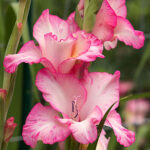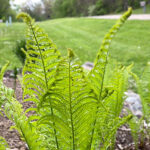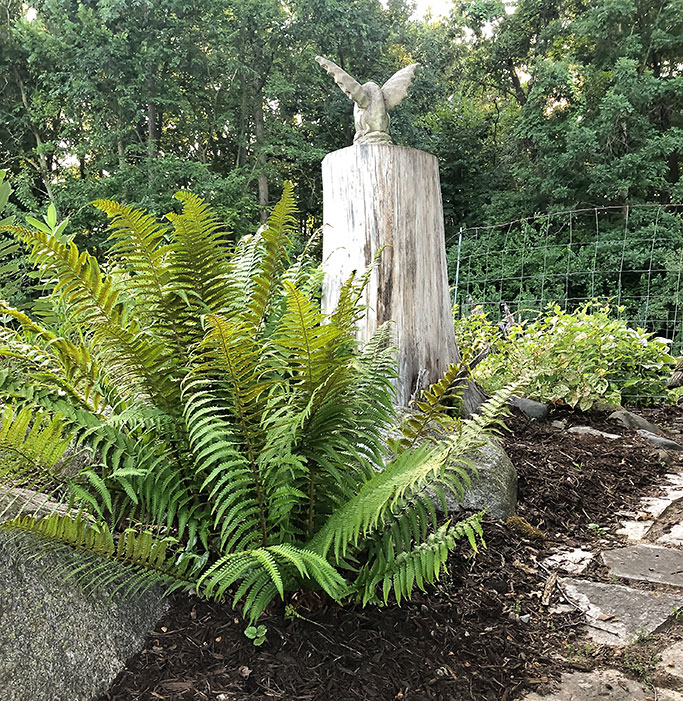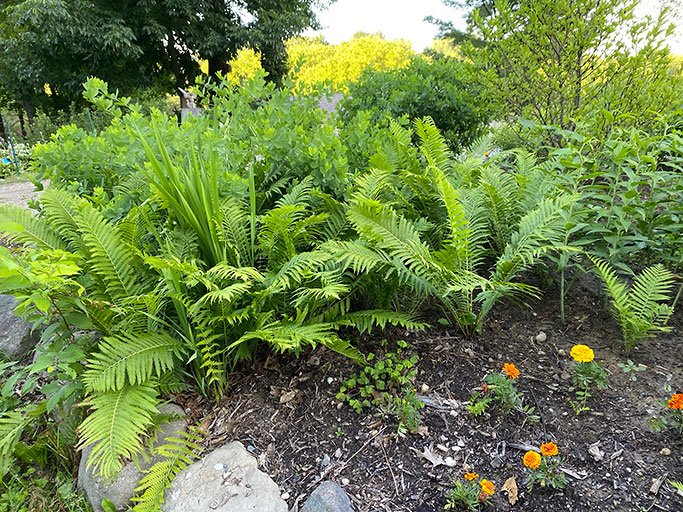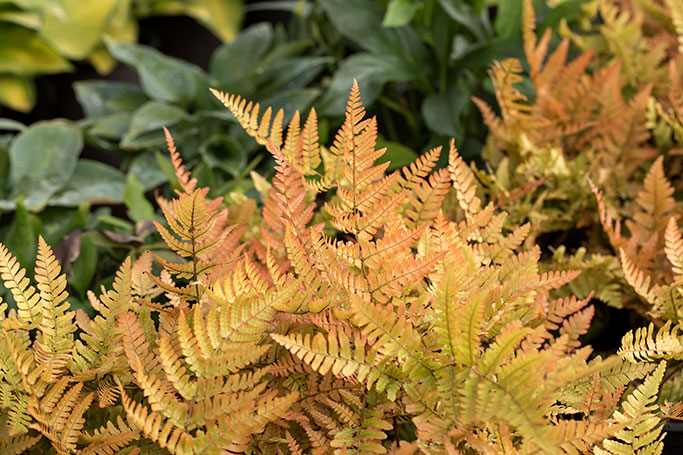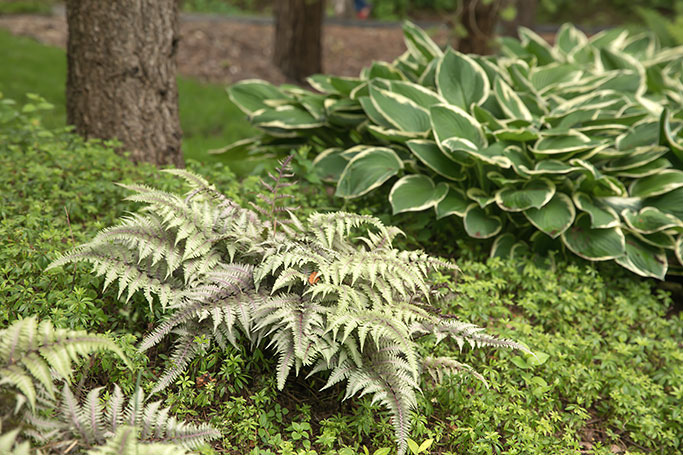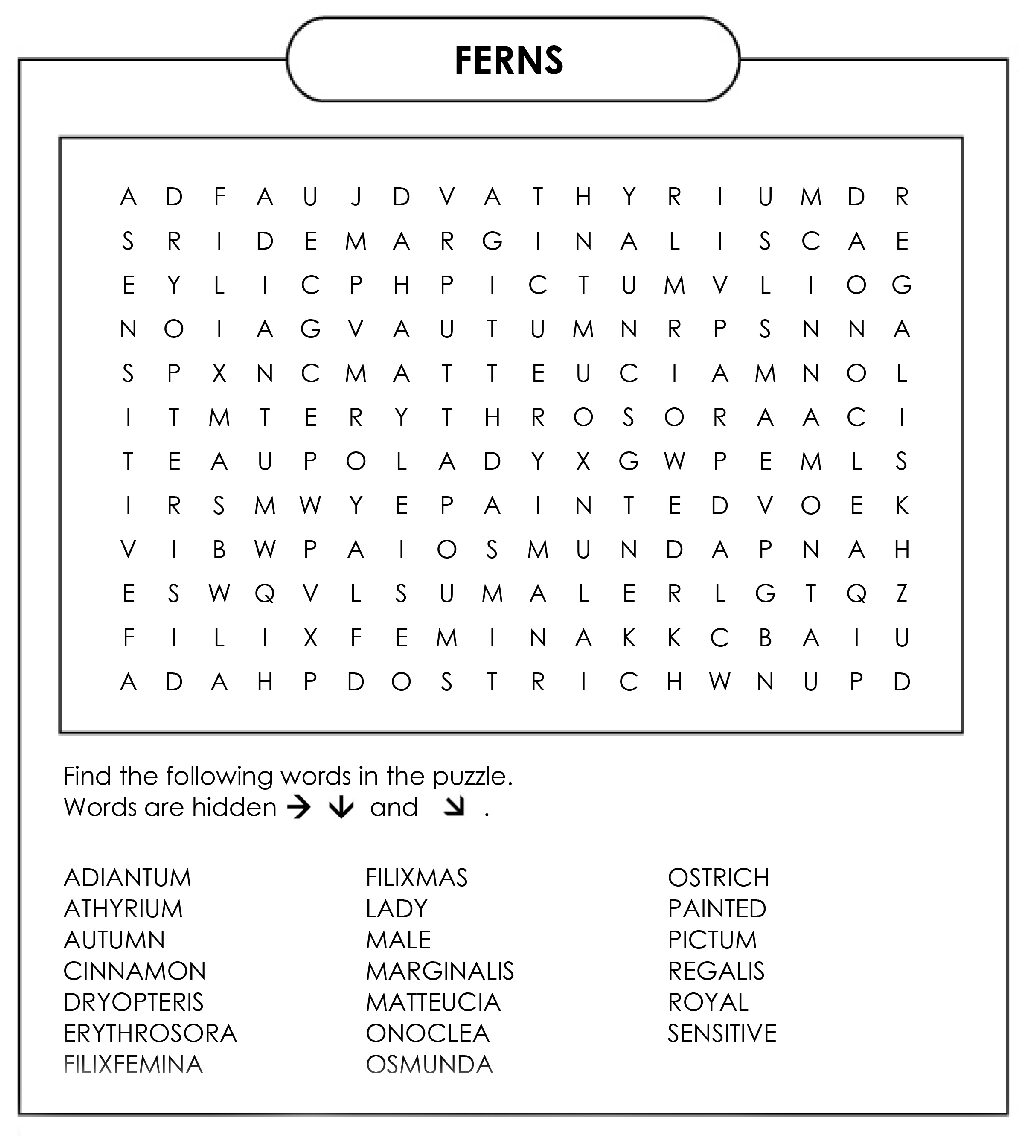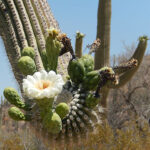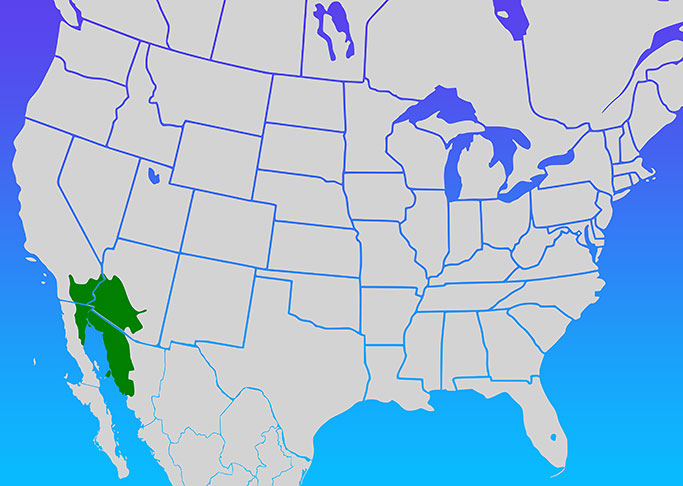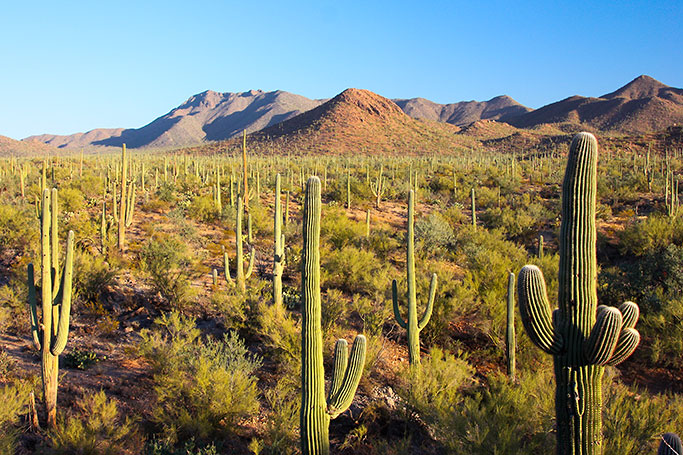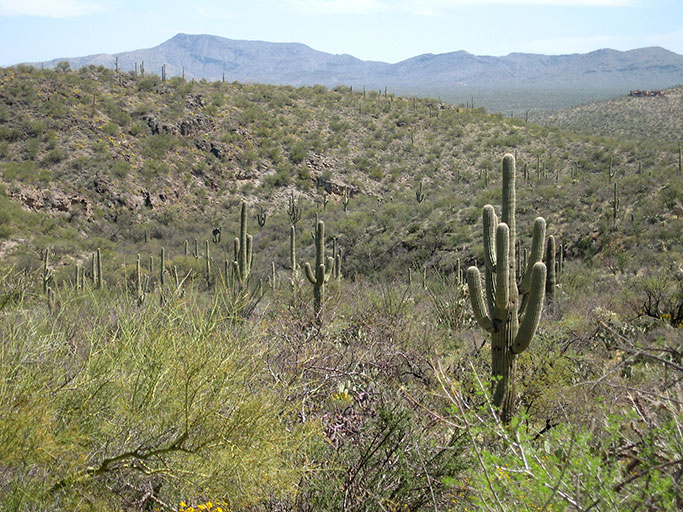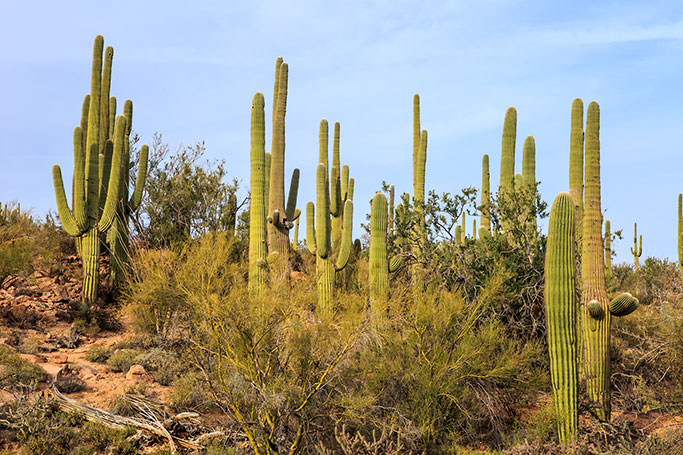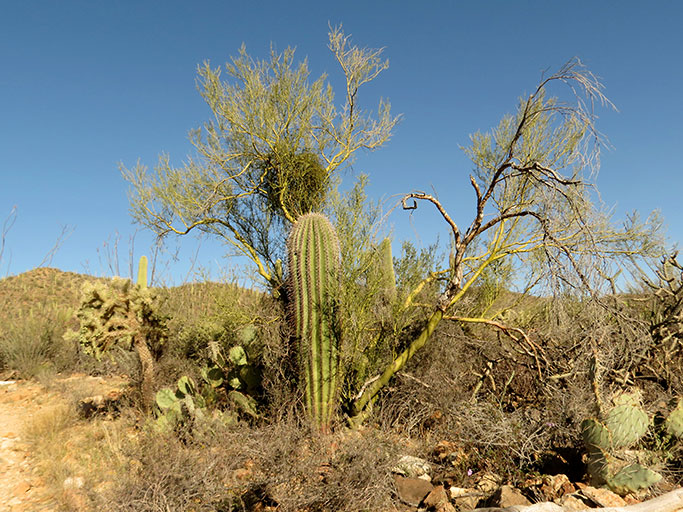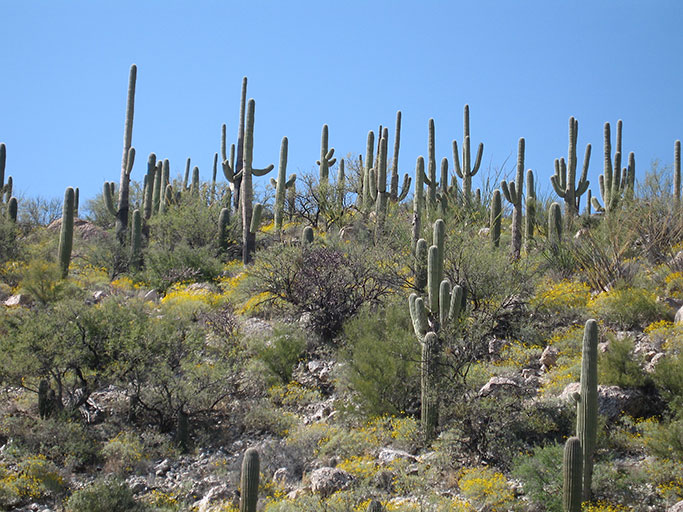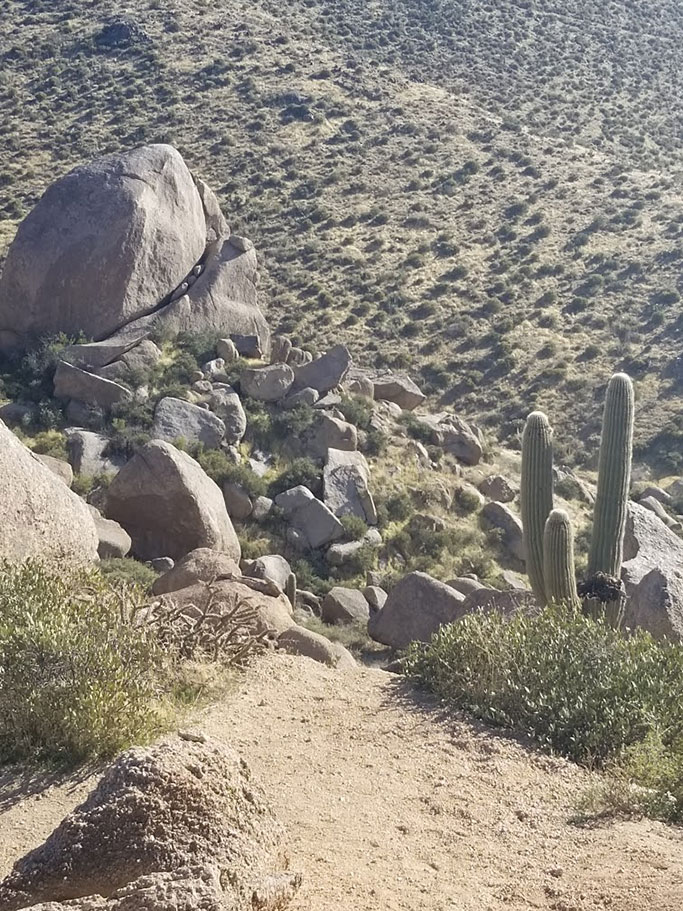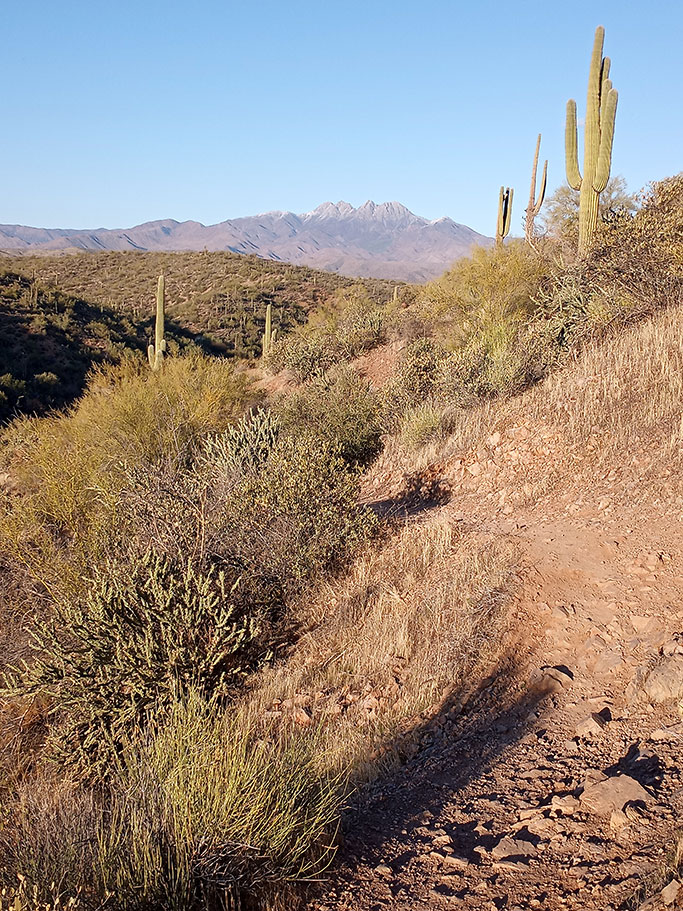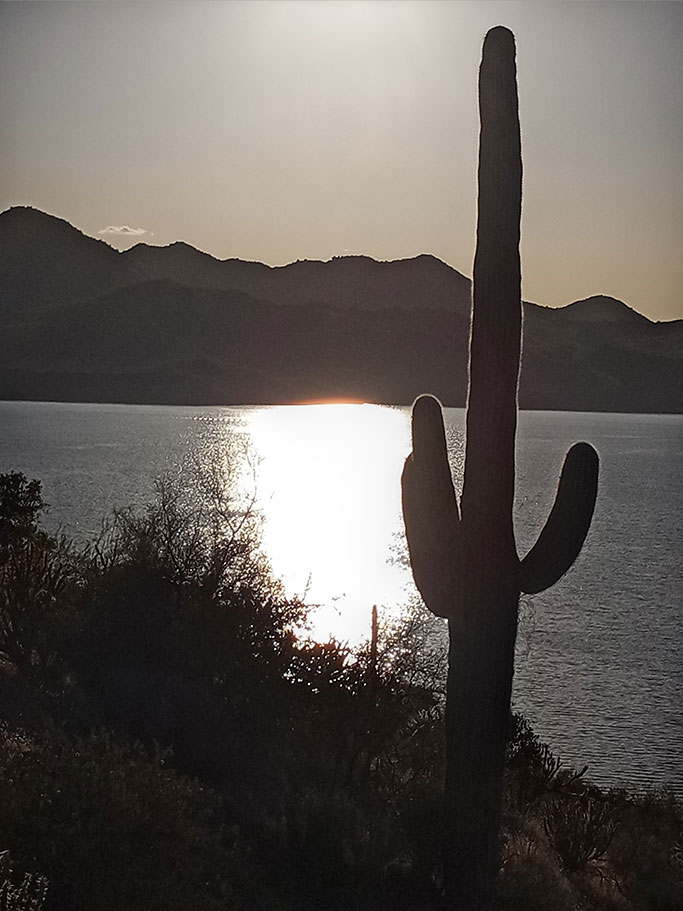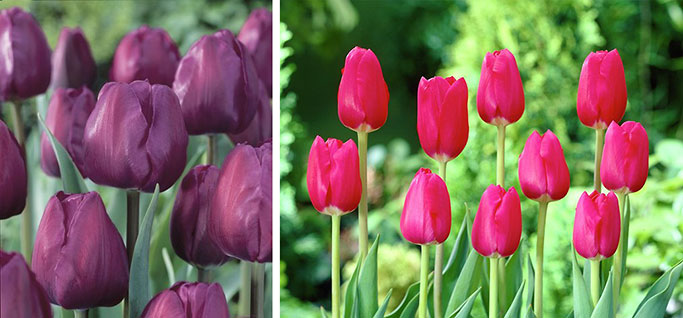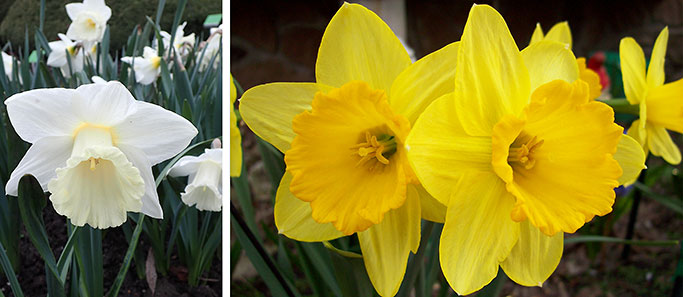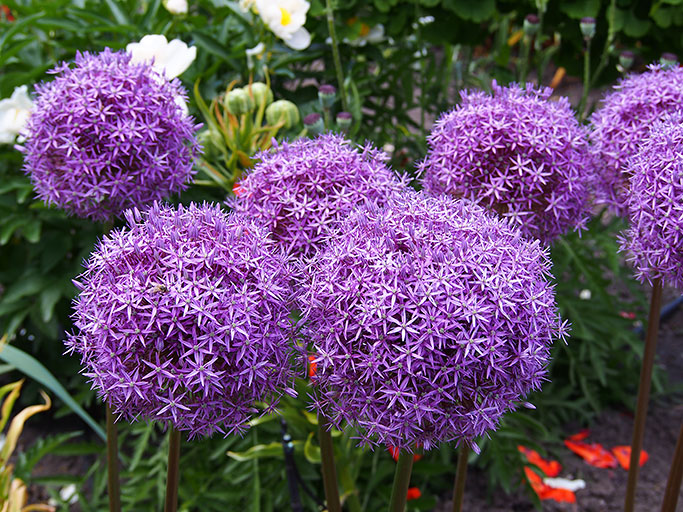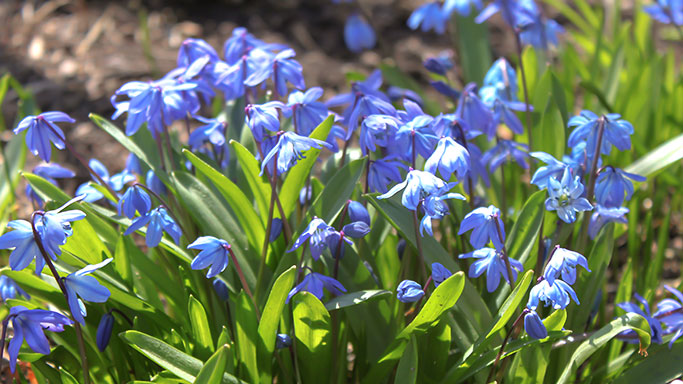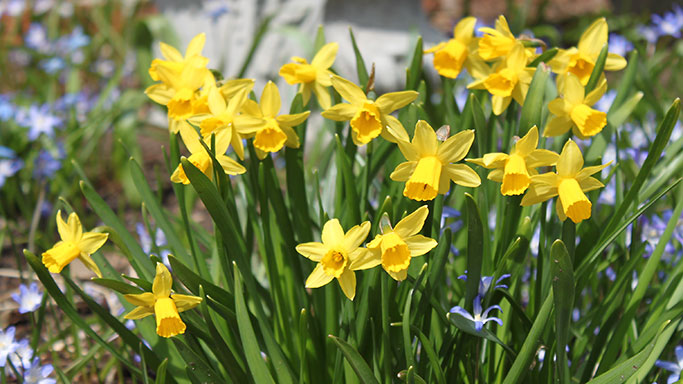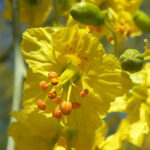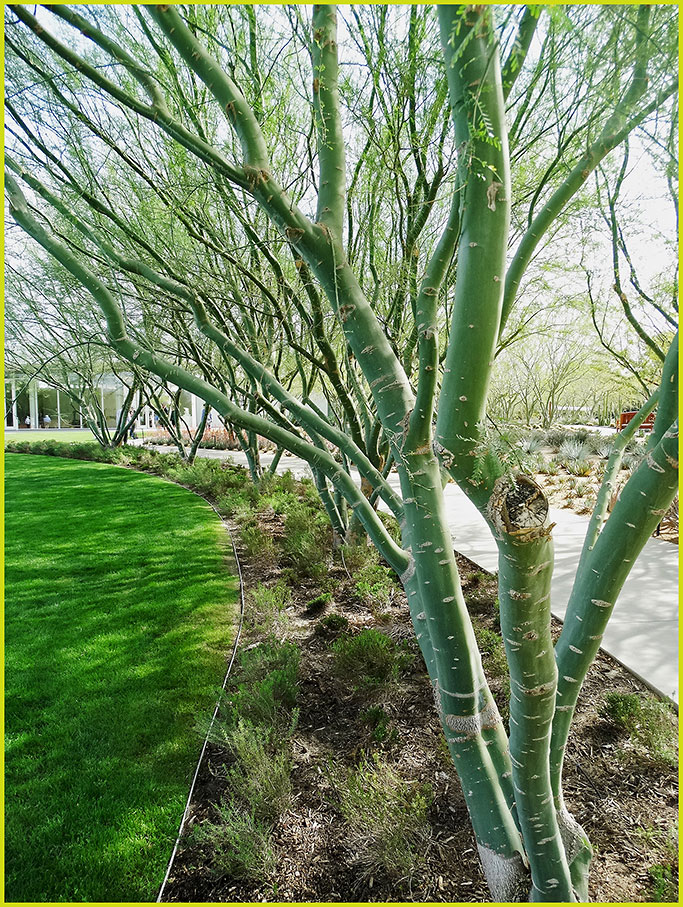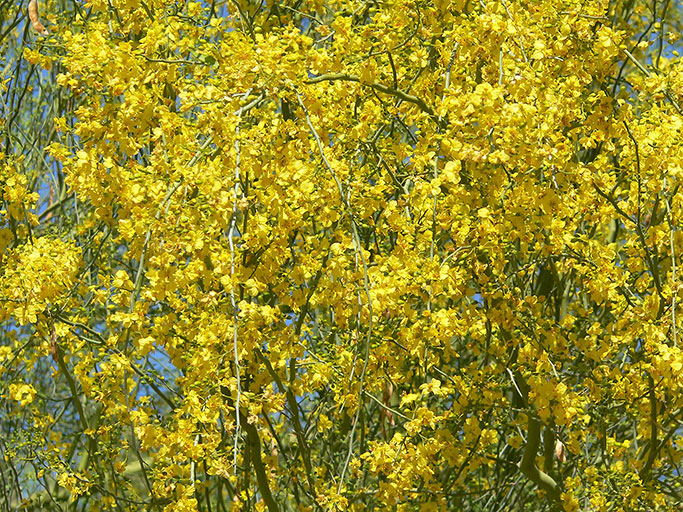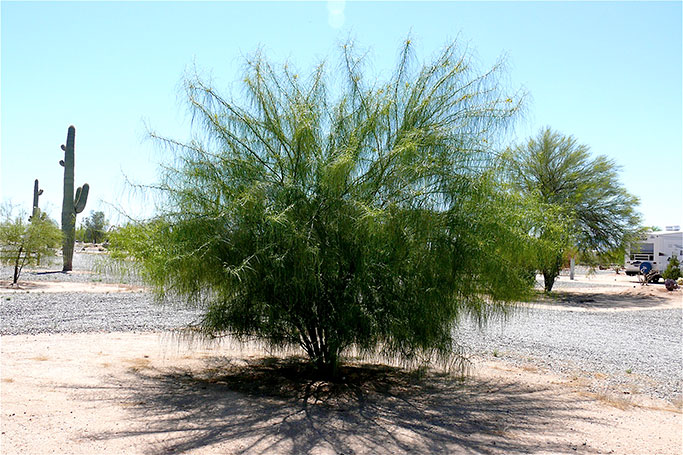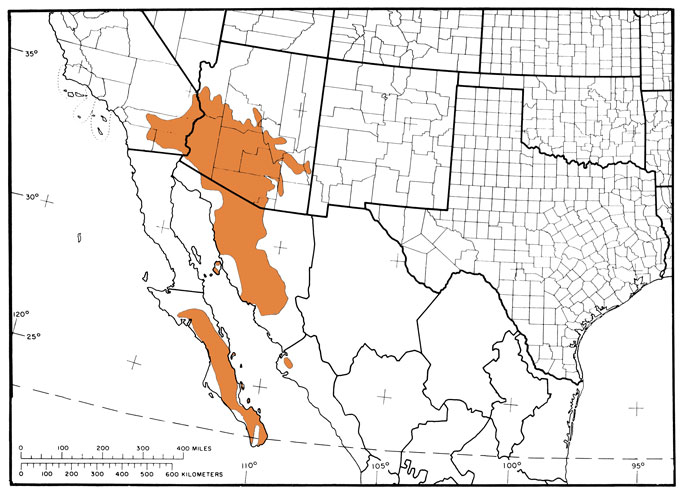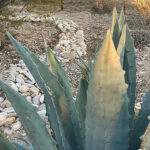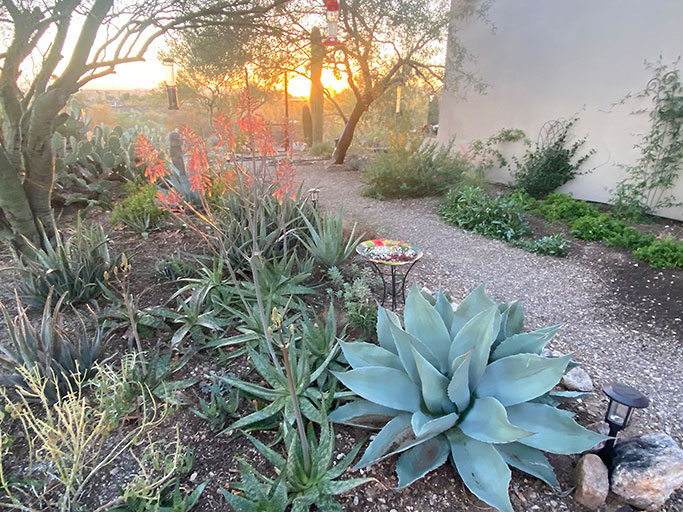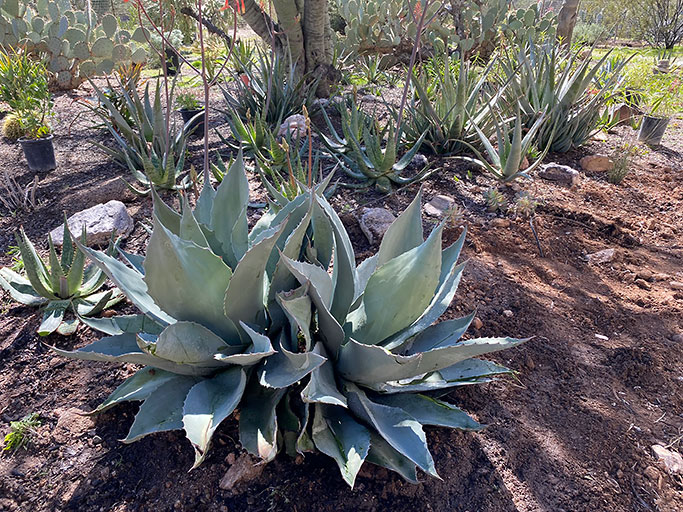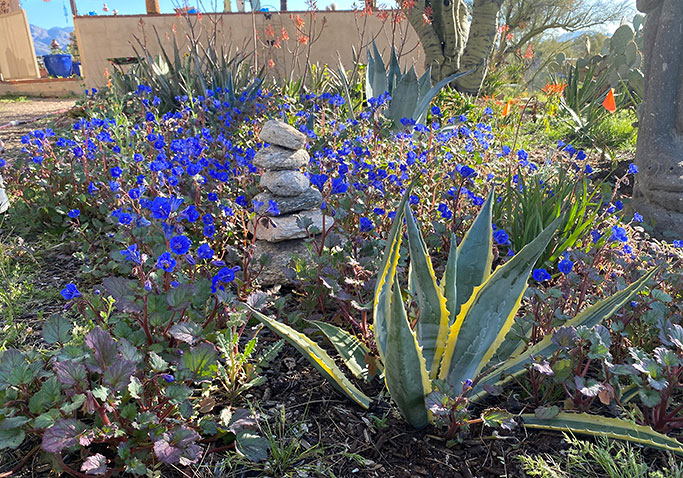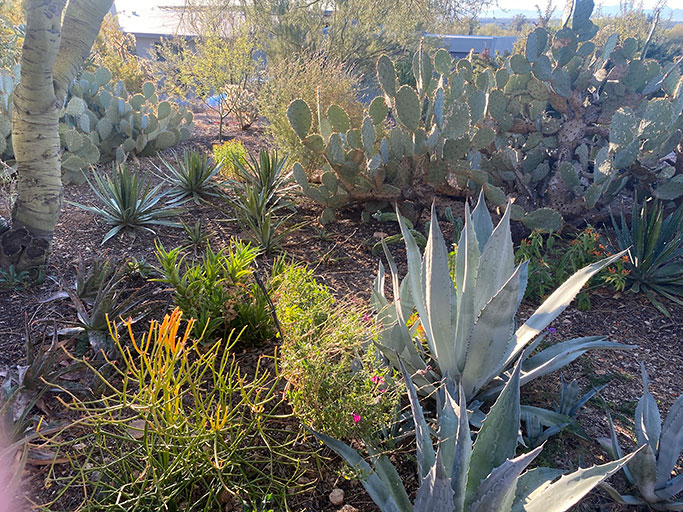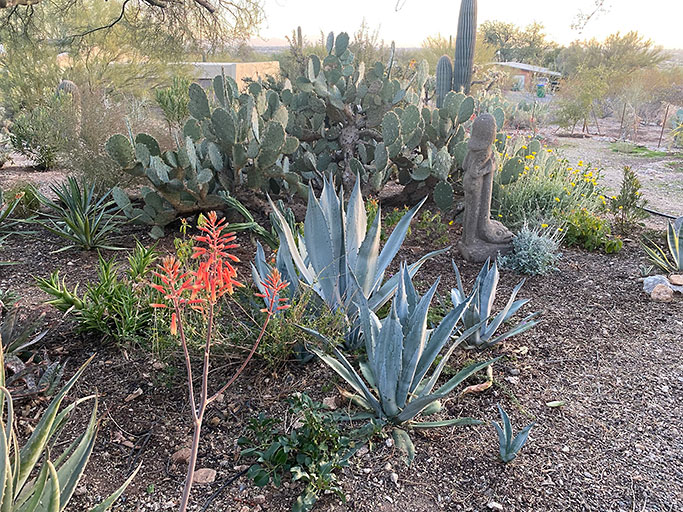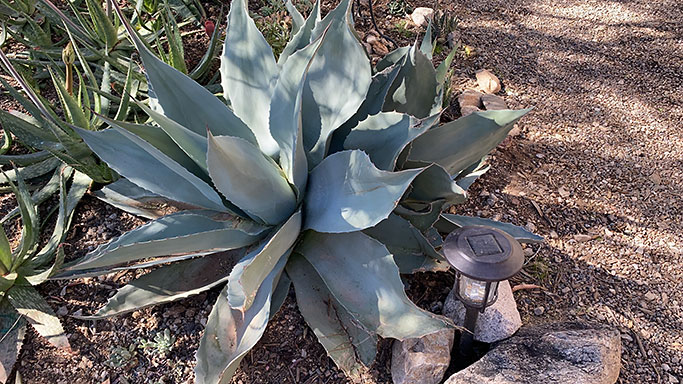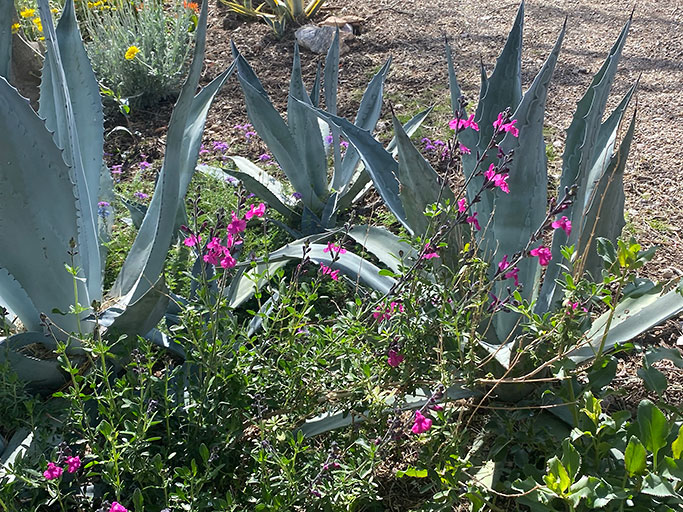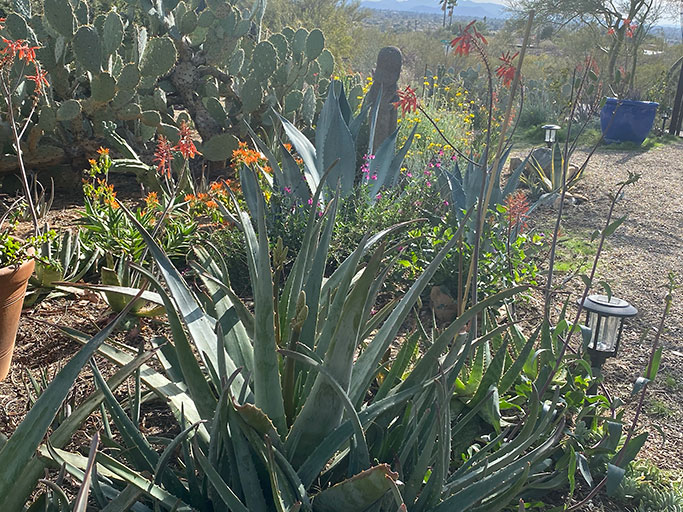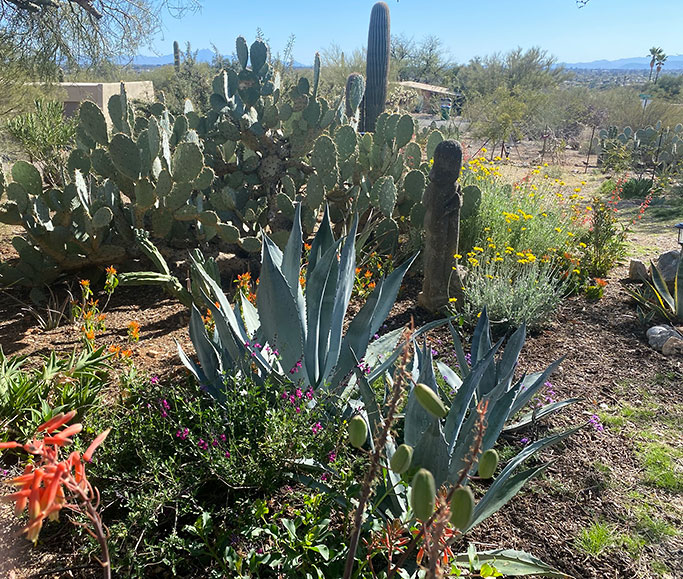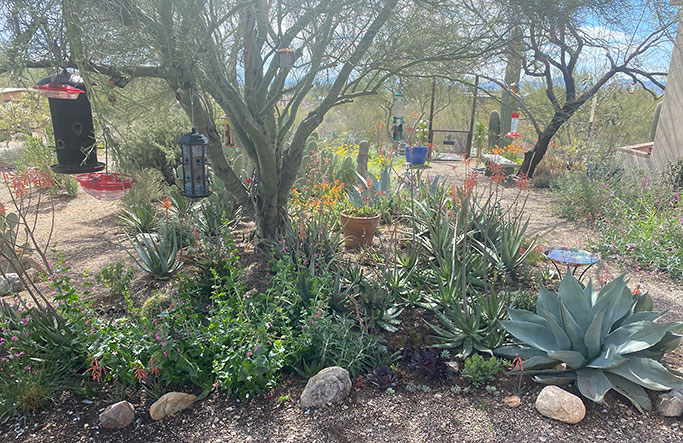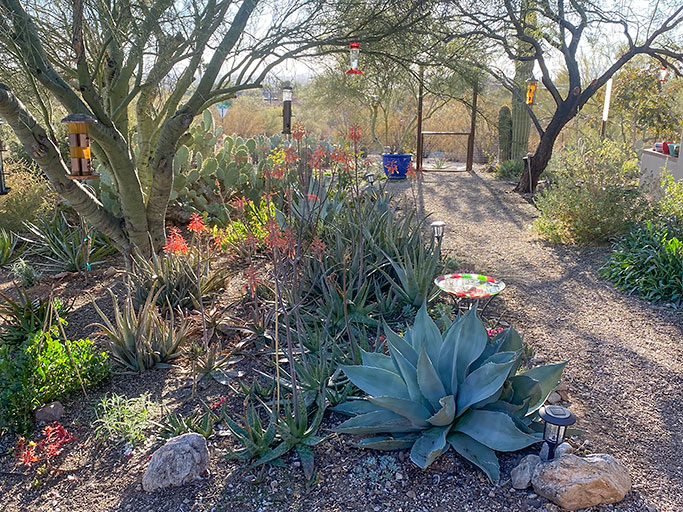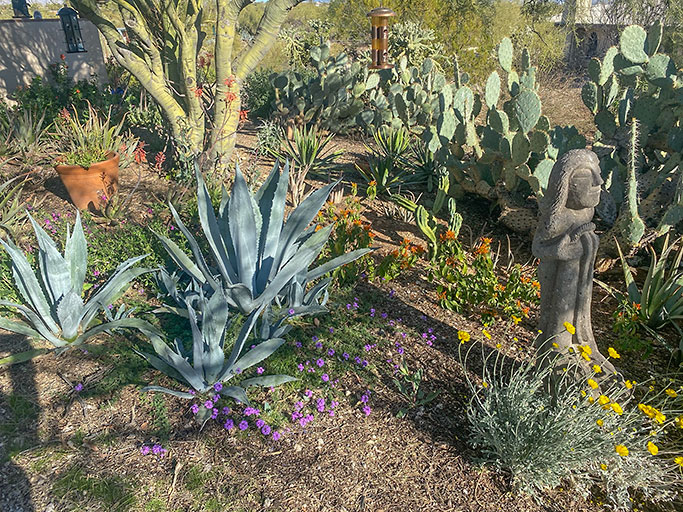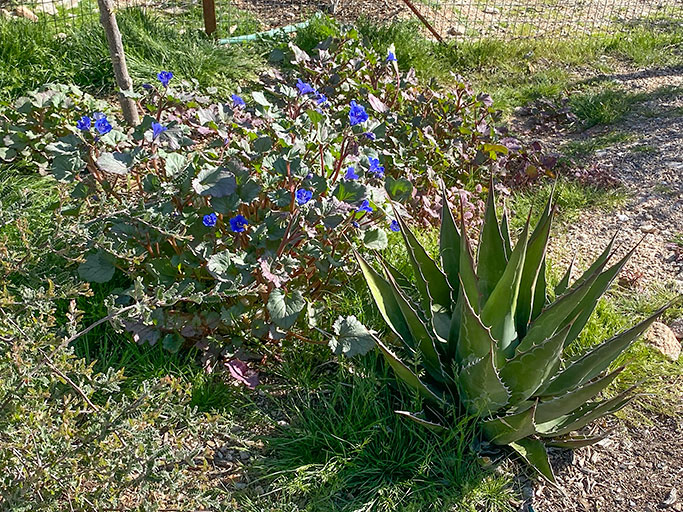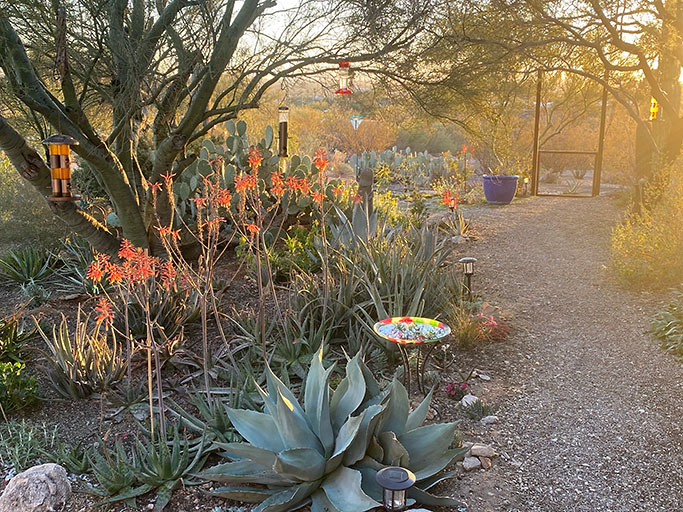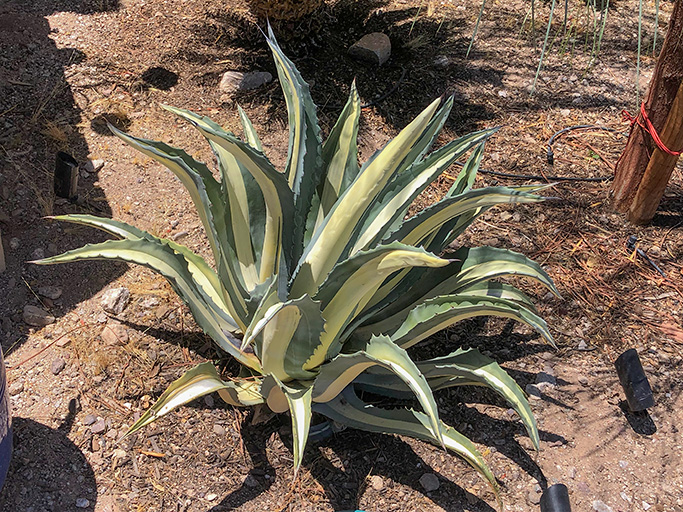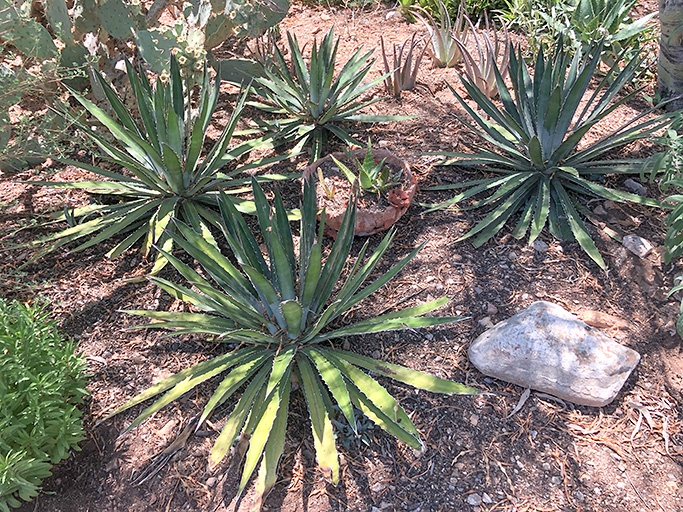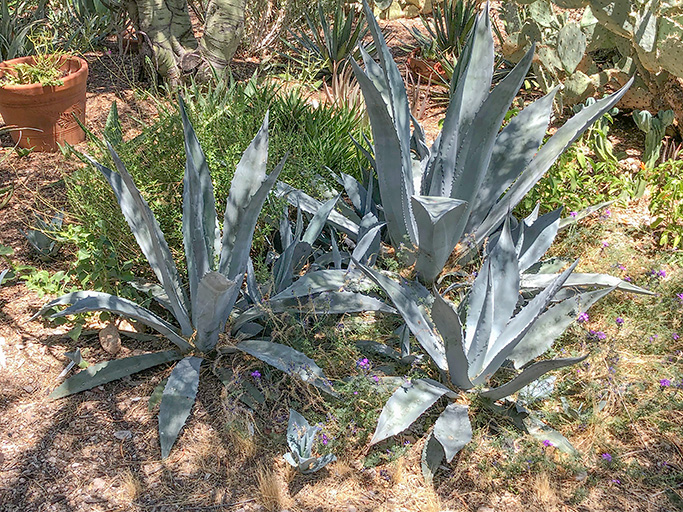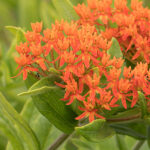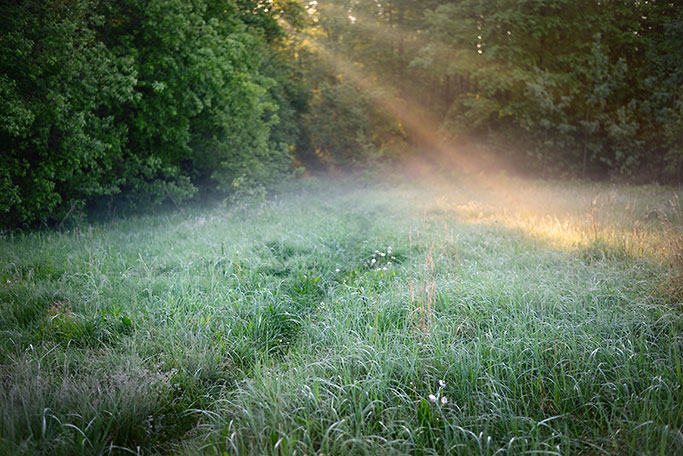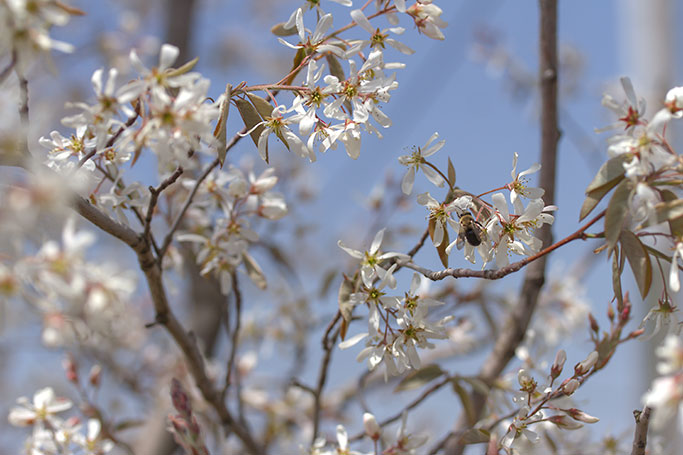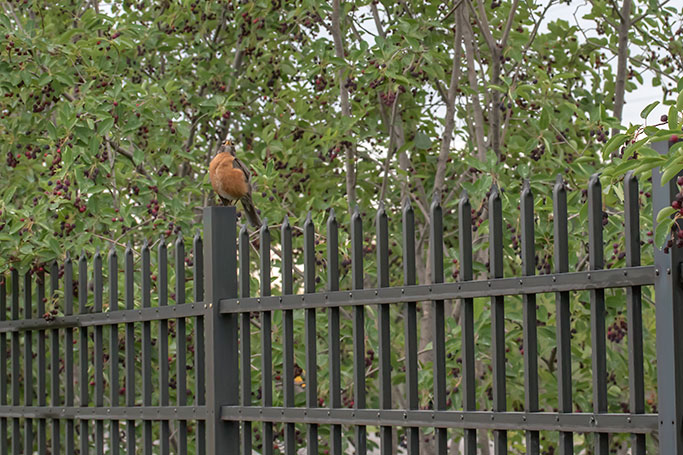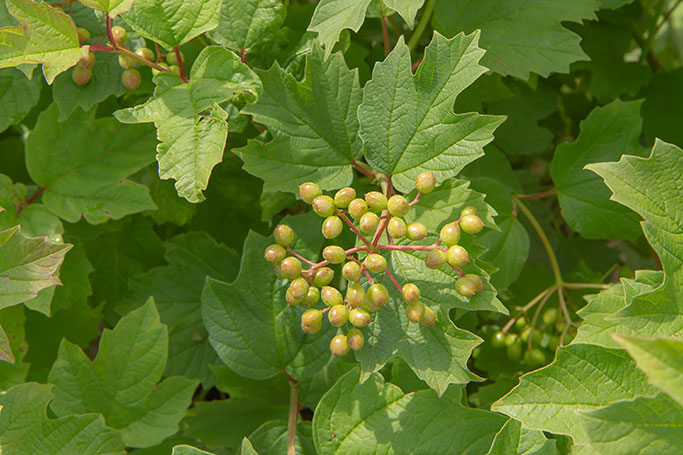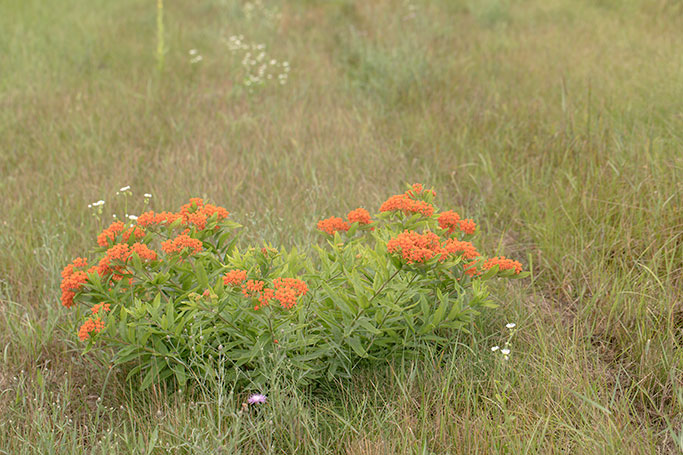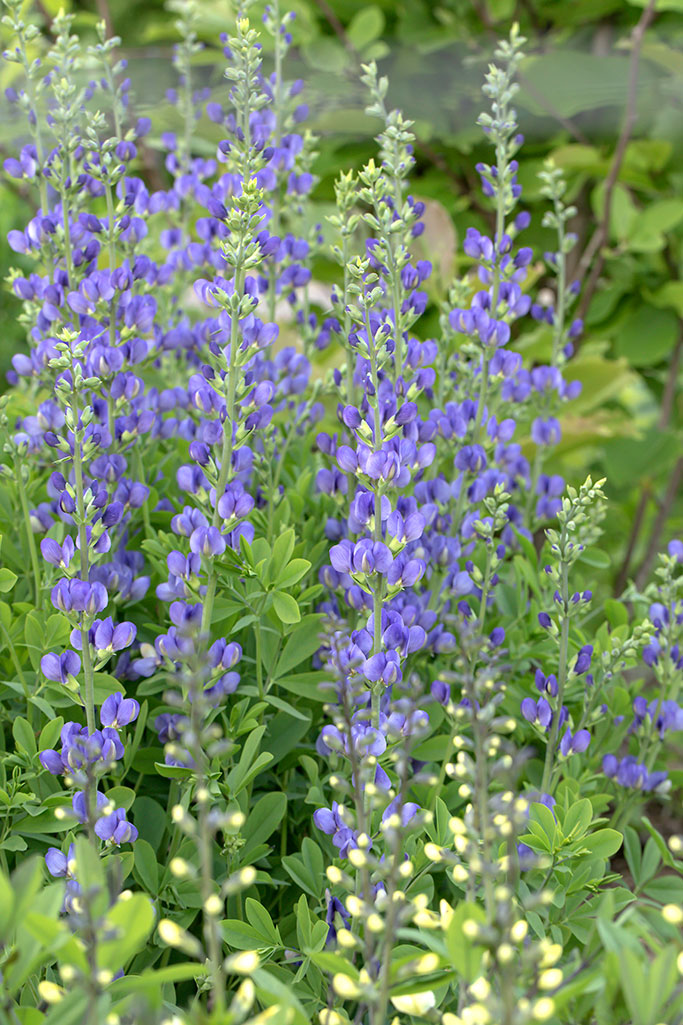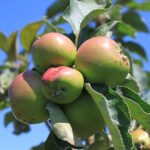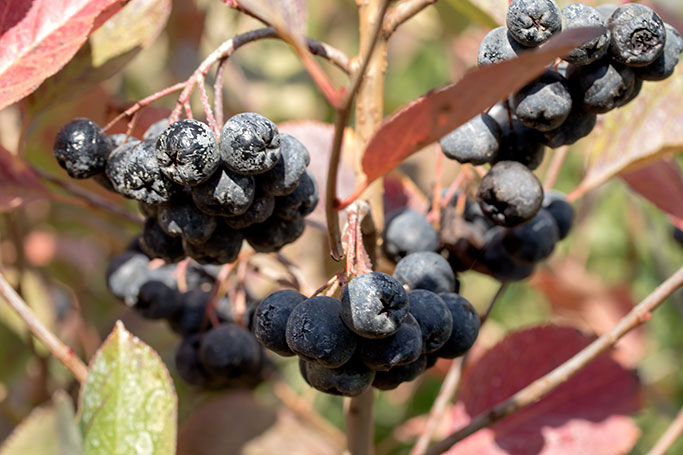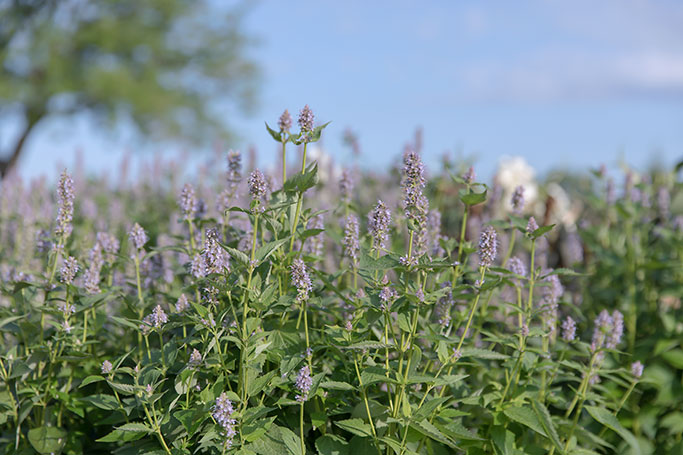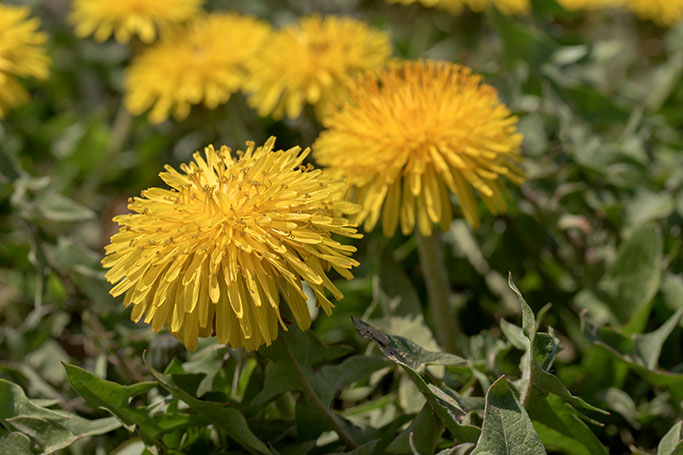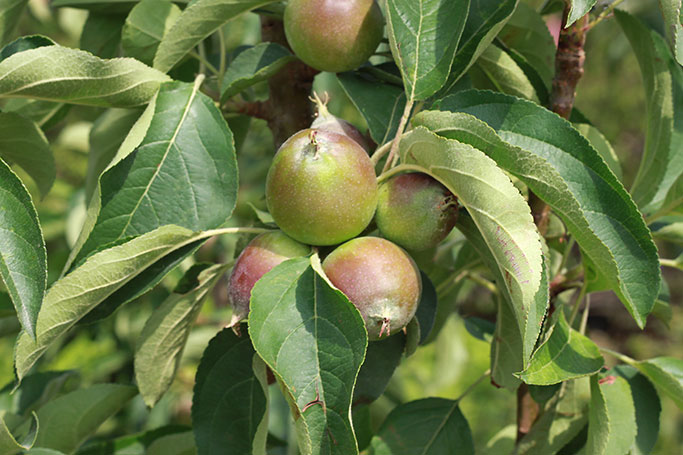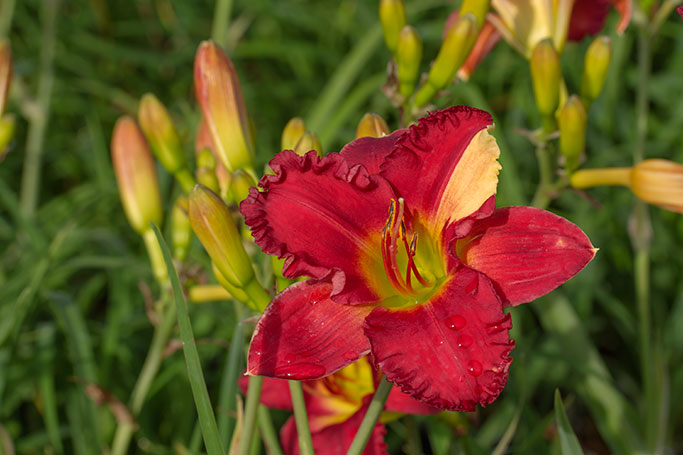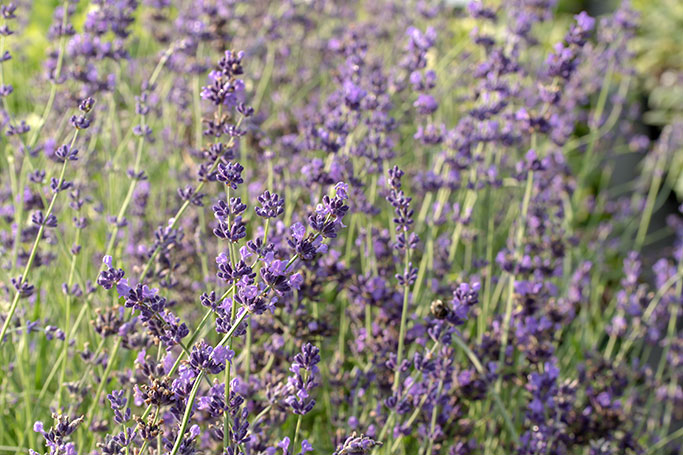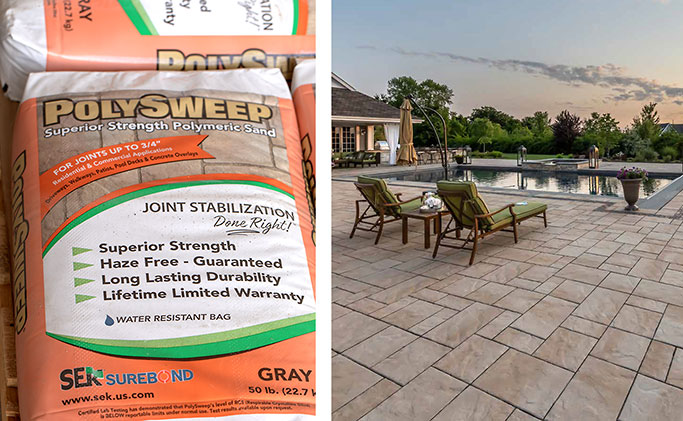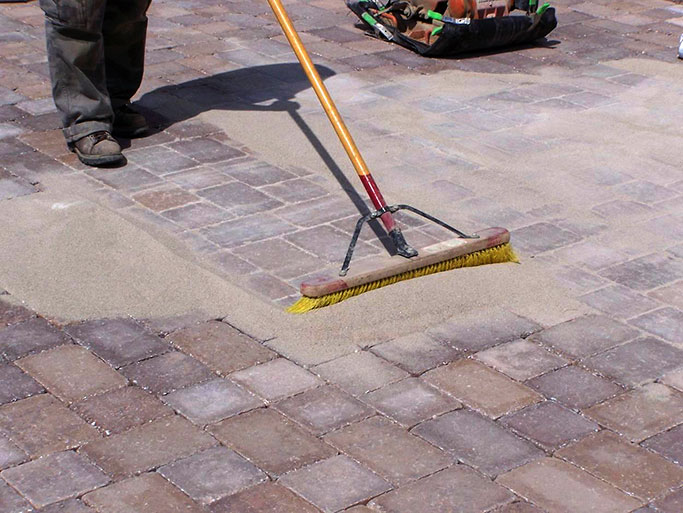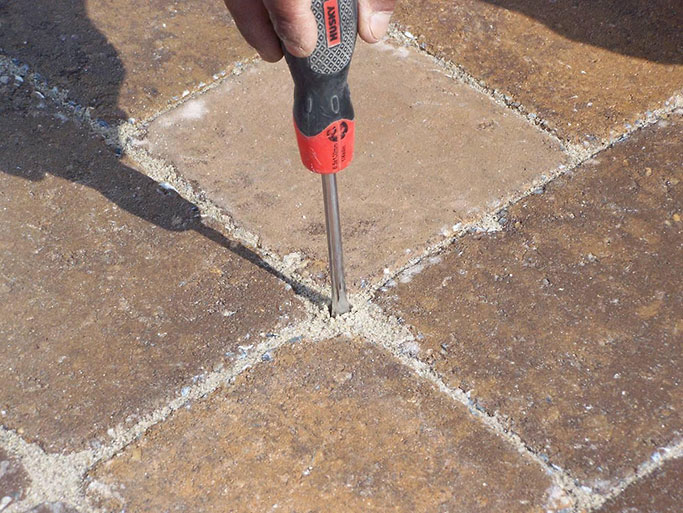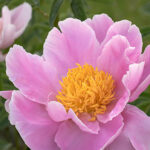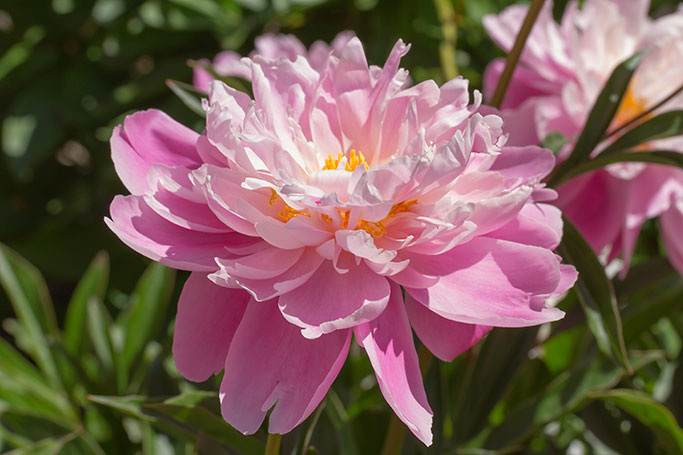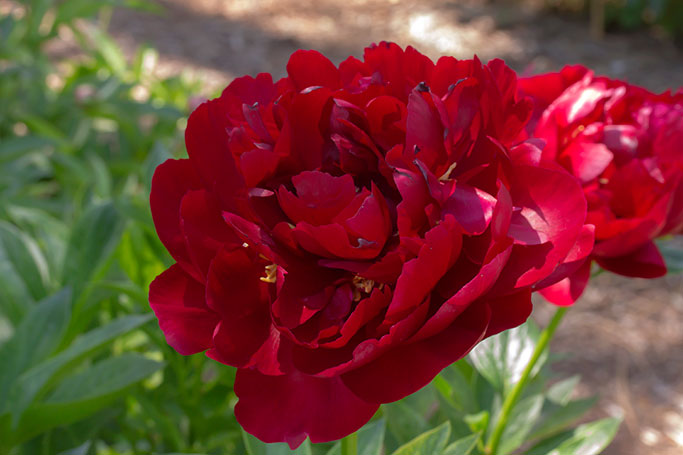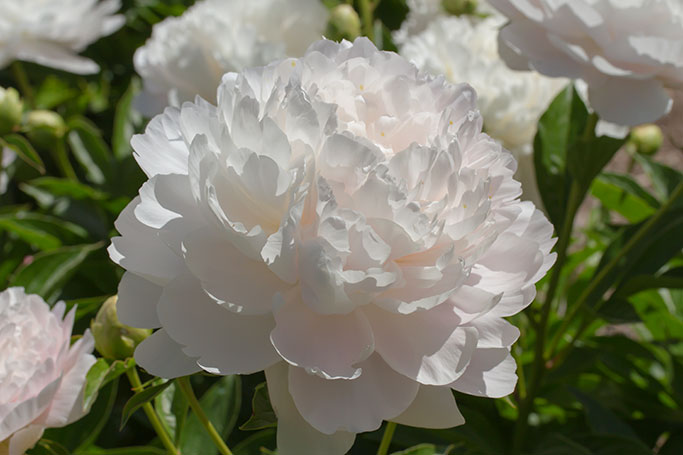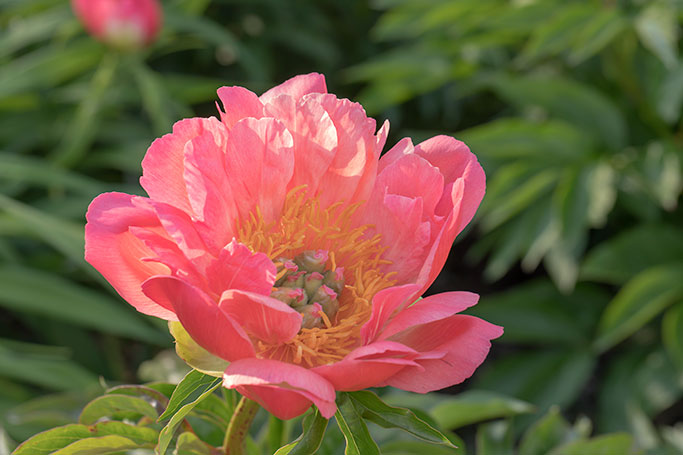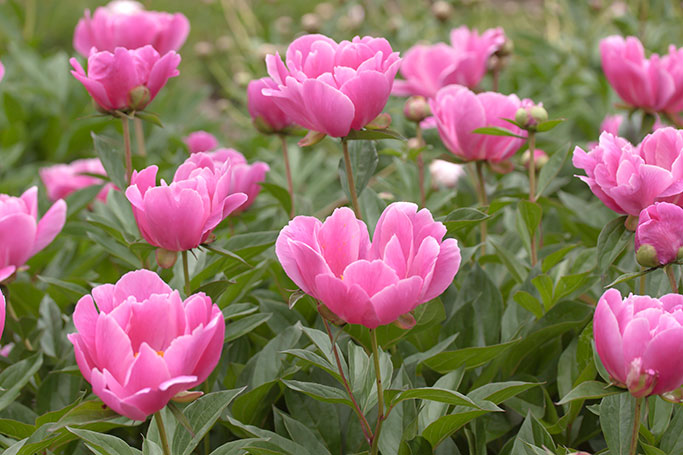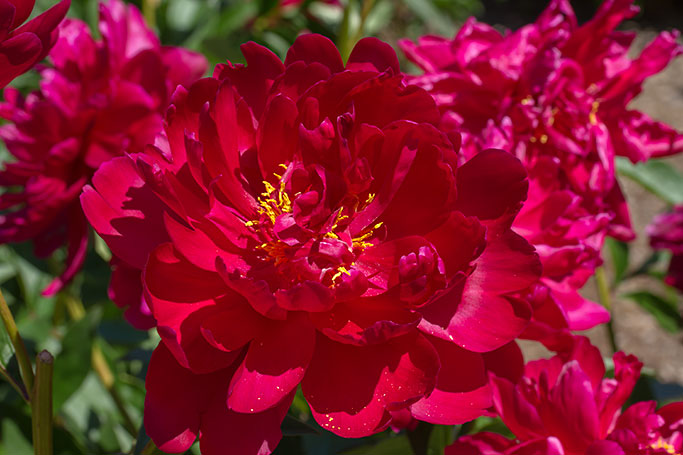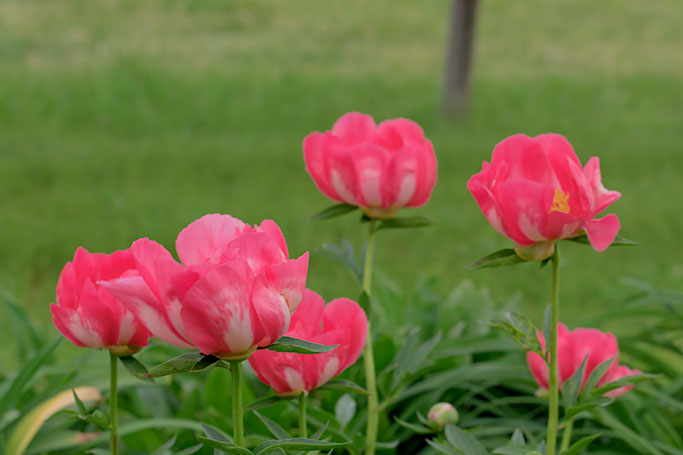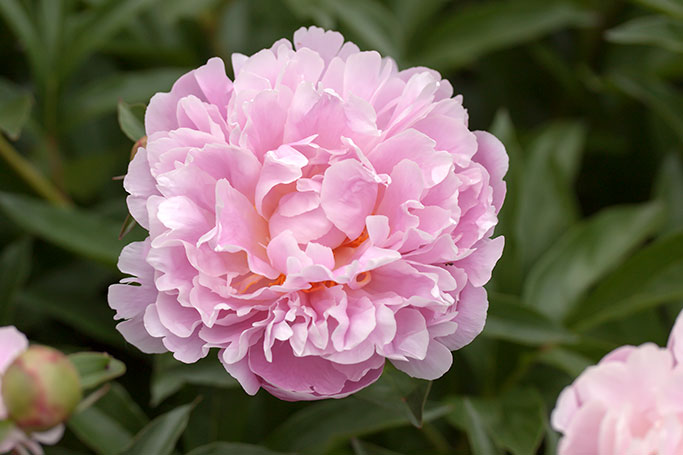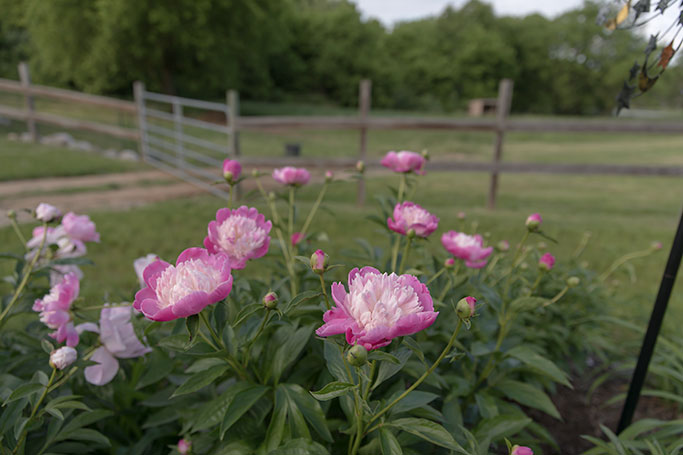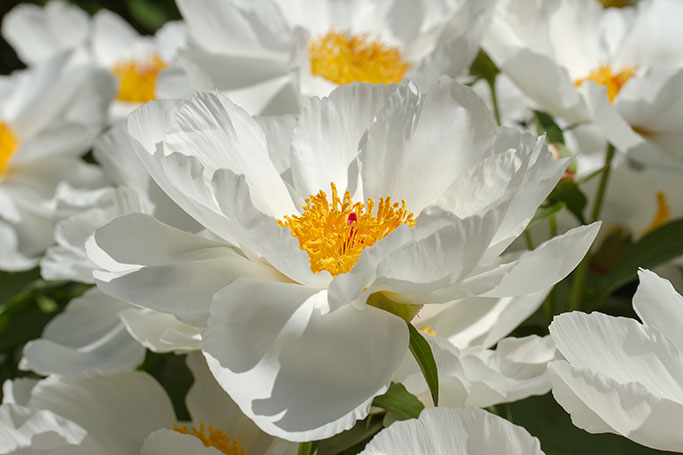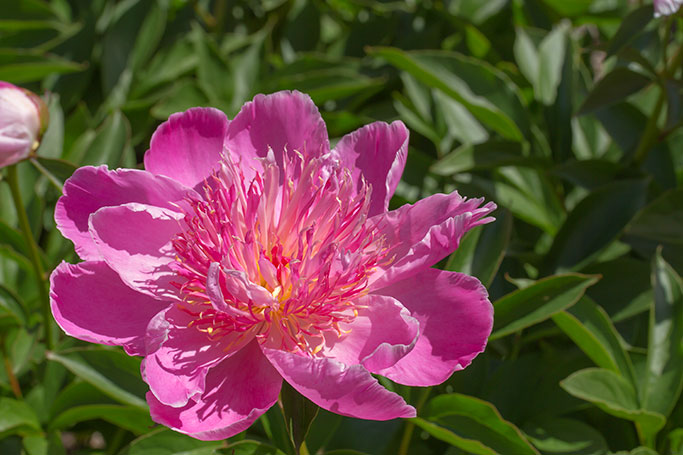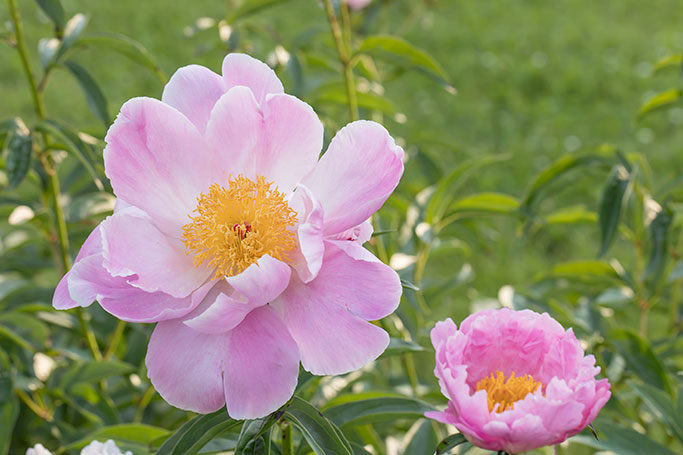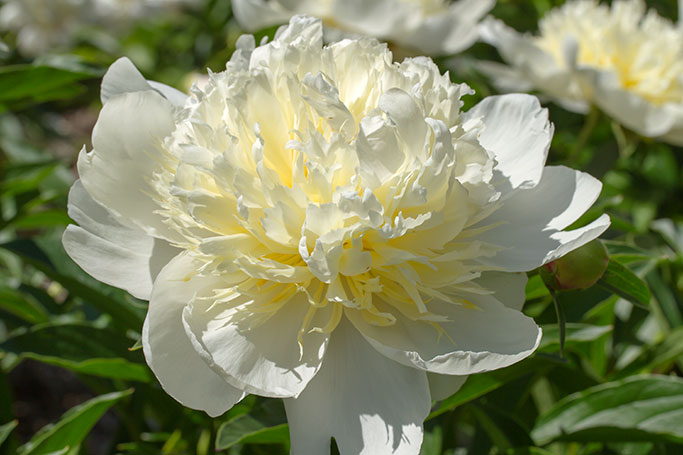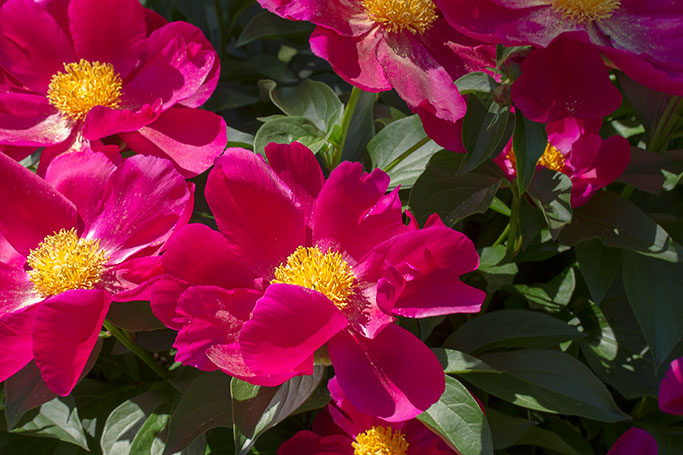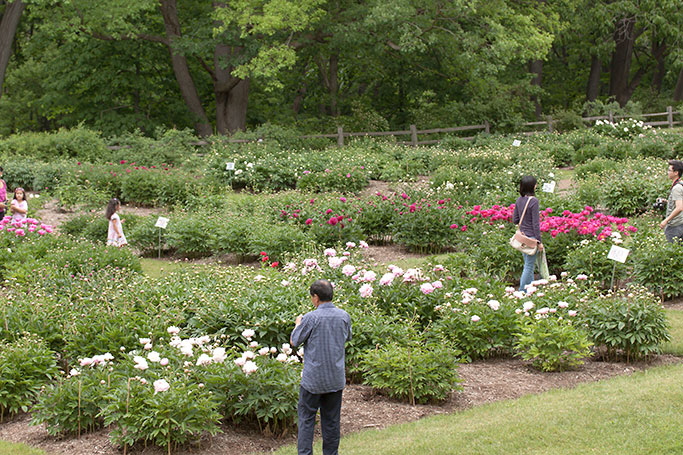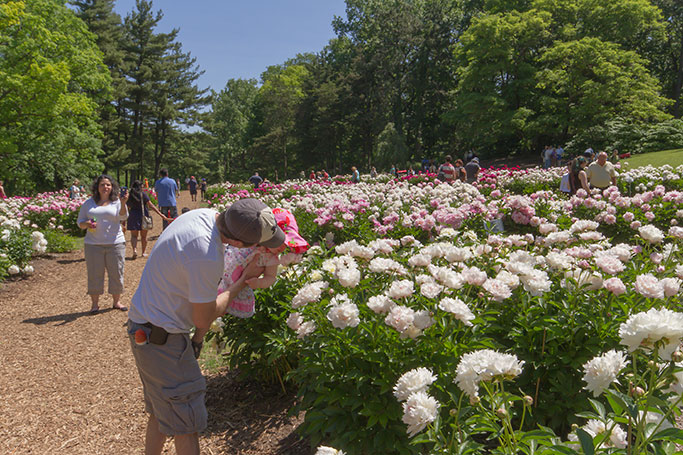When I was growing up my father and I planted gladiolus corms in our flower garden next to the house. I remember their bold colors reliably displaying each summer. When I moved into my own home years later I found all sorts of new and exciting colors available. They were beautiful that first year, but the following year I noticed that most of my glads didn’t come back. After some internet-sleuthing I realized that they are supposed to be lifted and stored inside for the winter. So why did they always come back when I was a kid?
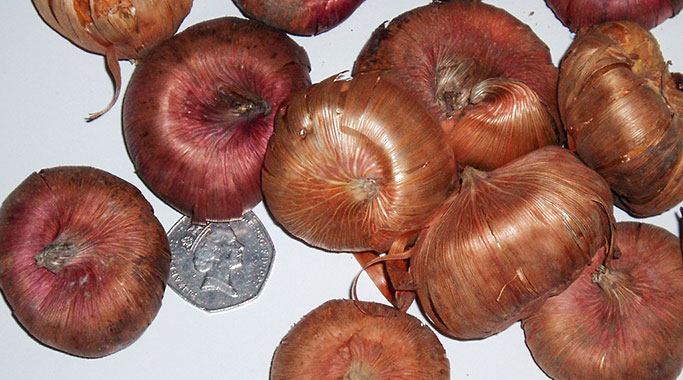
Gladiolus corms, Wikimedia Commons
Microclimate perhaps? Our main flower garden was against a south-facing brick wall, with years of compost mixed into our sandy soil. Glads don’t like a wet bum, so our native, well-drained soil was a good match. The sun-exposed brick wall warmed up the soil, tempering the chilly winter ground.
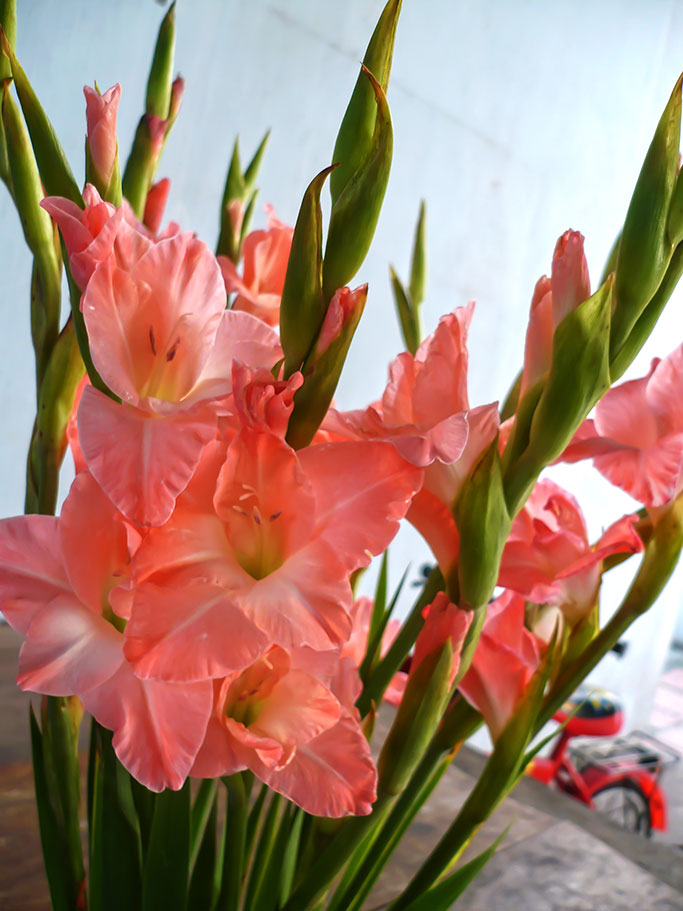
Prenn, CC BY-SA 3.0, via Wikimedia Commons
Could it have been the heirloom varieties we grew? I’m generally a believer that local heritage varieties are hardier. This seems to be the case with gladiolus. In my experience the new fancy ones, though beautiful, are hit-or-miss with successfully overwintering in our area.
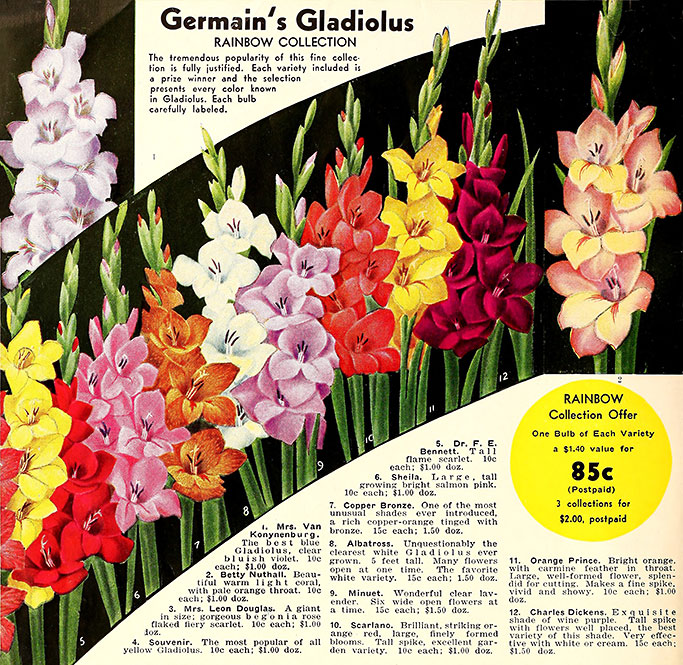
Internet Archive Book Images, via Wikimedia Commons
Here are some tips to help you on your way to beautiful spires of color each year:
Plant in pots
Be sure your pots are large and heavy enough so the flowers won’t blow over, also make sure they have drainage holes. Add rocks to the bottom of the pot, top with a sandy soil mix. For an extended blooming season plant pots a couple weeks apart, or mix varieties in the same pot. You can add supports to help the spires stand up as they grow tall. There are shorter, and even dwarf varieties available that may work well in pots without support or the fear of wind damage on balconies. After the flowers are spent it could be a good time to move the pots somewhere less conspicuous, as the plant does not rebloom. Sometime before the first frost, dump out the pots and collect the corms, set them somewhere where they can dry in the open air for a couple days, then lightly cover them up to dry further. For final long-term winter storage place them loosely in layers in a cardboard box, separating layers with newspaper. Keep them in a cool dark place where they may nap until spring, protected from animals and sub-40f temperatures.
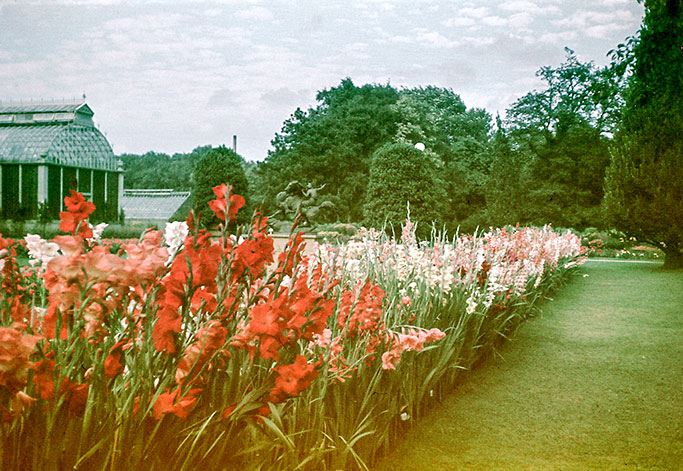
Västra Götaland, Göteborg, Göteborg, Västergötland, Miljöer-Stadsmiljö, Byggnadsverk-Parker och trädgårdar-Park
Leave ‘em in the ground
With a little bit of luck and some forethought you can have success simply leaving your glads in the ground! Moisture and extreme cold temperatures are what you’re trying to manage. To this end, I have found that digging trenches in sunny areas that are not prone to spring puddling works out well. Planting next to a sun-exposed wall is even better! Dig the trench about 14” deep and fill the bottom 3” with rocks. Mix some native soil with whatever amendments are needed to build a sand-heavy blend with a modest amount of organic matter. Plant the corms at various depths as you fill the trench with soil. I’ve sunk ‘em down 8” with no problems. Hardier varieties such as ‘Violet Queen’ and ‘Atom’, as well as many old heritage classics may help you gain an edge on the colder weather.
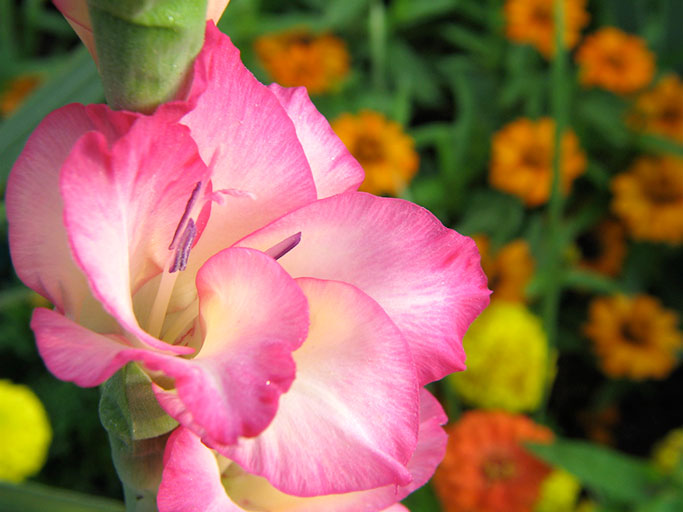
Audrey from Central Pennsylvania, USA, CC BY 2.0, via Wikimedia Commons
Glads will do well with a mulch covering the soil and a balanced fertilizer after emergence.

